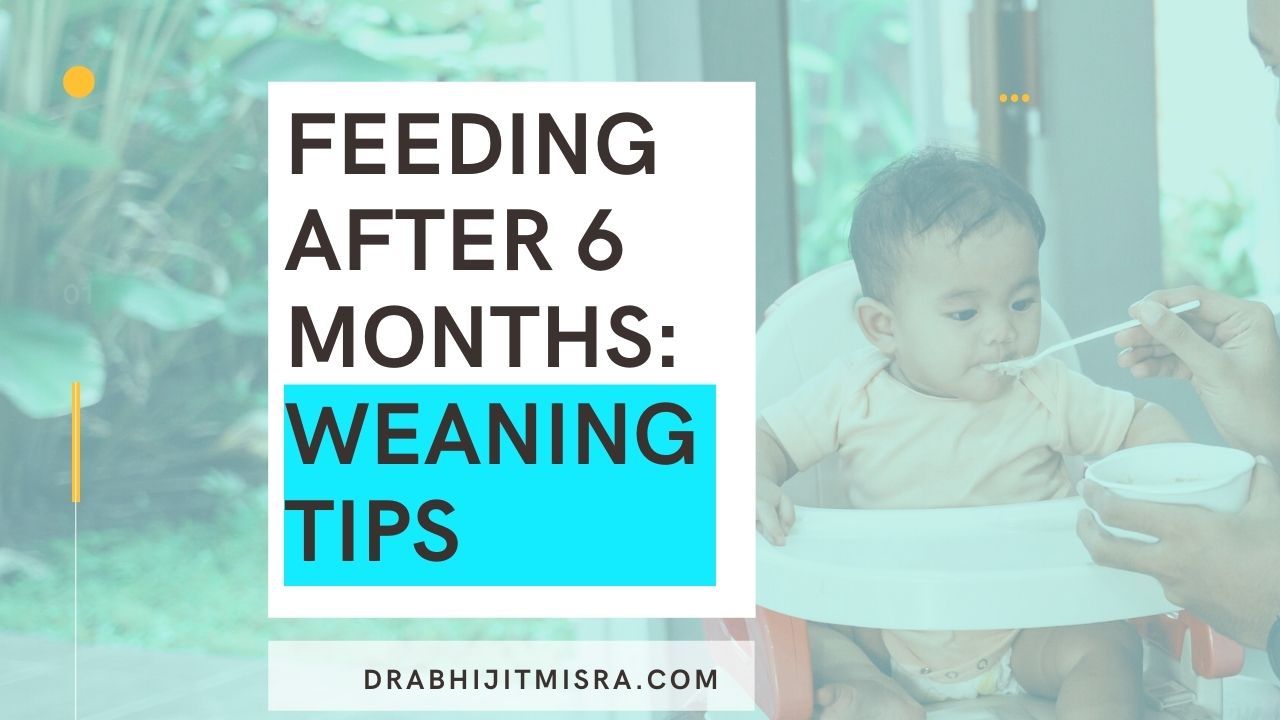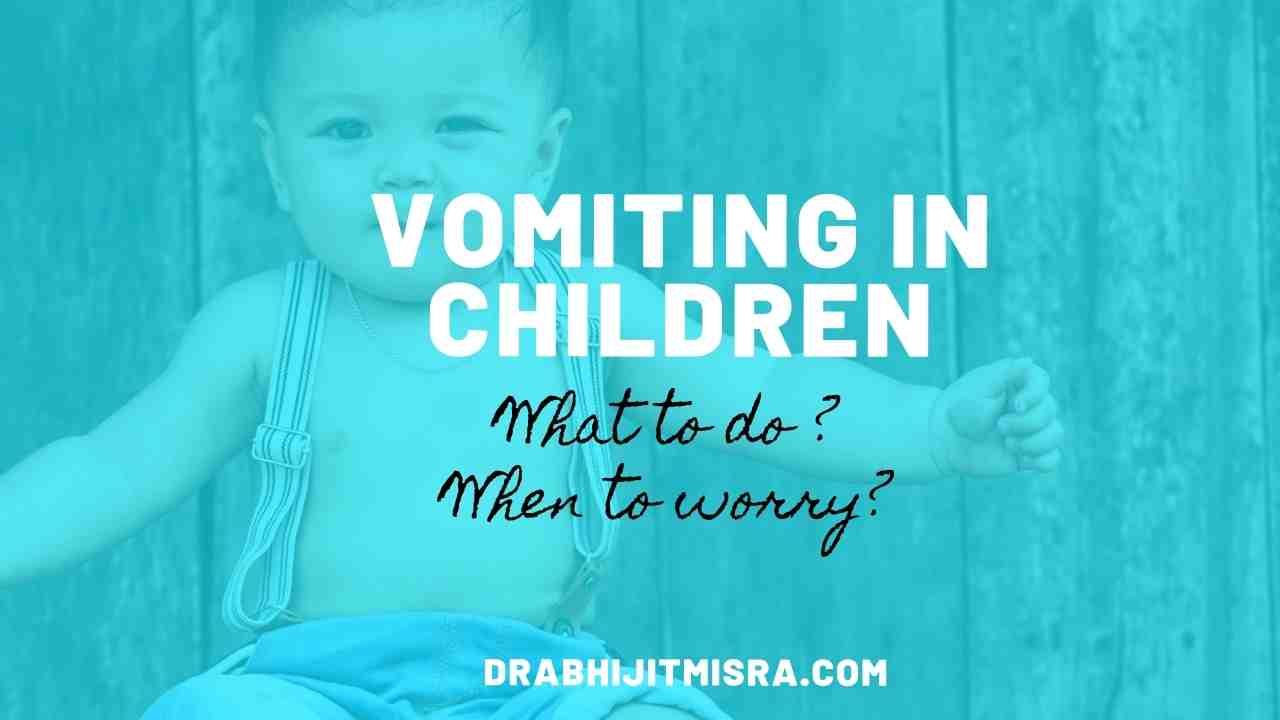Feeding during the first six months of life is easy, and every parent is aware. It is either Breastmilk or formula milk depending on the individual situation. But after 6 months, feeding becomes tricky, and most of the time, parents don’t have a sound idea about what to feed and how to feed.
Common questions parents have in their mind during weaning are:
What to feed?
How to feed?
What to start with?
How to check tolerance?
What if my baby doesn’t tolerate?
What about water?
My baby don’t have any teeth, even then solid food?
How to check my baby is getting the required nutrition?
In this post, I will try to answer each one of the standard listed queries.
What to feed during weaning?
6 Food group is needed for baby’s nutrition and development. Namely-
- Cereals: like rice, wheat, oats, suji, puffed rice, etc.
- Pulses: like dal (Masur/masoor, moong, etc.)
- Veggies
- Fruits
- Animal protein: fish, meat, and egg
- Milk
All the six food groups are equally crucial for the better growth and development of your baby. So, a balanced diet comprised of all the food groups in the right proportion is necessary.
Note: Fish is a good source of protein and essential fatty acids. So regular consumption of fish ( at least twice a week) is recommended for better brain development.
How to feed?
The feed should be semi-solid in consistency (a gravy or gruel like). It should not be too liquid that it quickly falls from the spoon, or It should not be too thick that it doesn’t fall from the spoon when tilted.
Weaning tips: What parents should remember while feeding.
1) Baby should be hungry: so don’t give feed for at least 3hours before trying for a semi-solid meal
2) Feeding in sitting position: never feed in a supine position.
3) Make the event entertaining but avoid too much distraction.
4) Talk to your baby while feeding
5) Try a small amount at a time
6) Give feed in the middle part of the tongue, not over the front: as babies have a natural reflex to spit when anything is given in the front part of the tongue.
7) Give 30 minutes maximum time for the event. Don’t cut short or prolong it as both are harmful to your kid. Have patience as it is the time to make your baby learn a good feeding habit.
Which baby food to start with at six months? All about weaning food
Home-cooked food (well boiled and mashed )
Never use a mixer for grinding foods. As we aim to let, the baby learn the food items he/she should regularly take for lifelong. The Mixer grinder machine alters the texture and consistency of food.
Start with one food at a time. If the baby accepts and tolerates well, gradually increase the amount of food. Then add another food item.
Remember, once or twice, the refusal doesn’t warrant stopping the food. A particular food should be tried at least ten times before discarding it from the food list.
Baby food at six months:Examples
- Well-cooked smashed rice: add butter, salt, and or little sugar to make it tastier
- Add dal to it if tolerates well.
- Add different veggies
- Try mashed potato or banana
- Give rice milk or bread milk, or suji milk in gruel like consistency.
- Try to add fish to the diet at least twice weekly for non-vegetarian
How to check tolerance?
Usual symptoms of food intolerance are:
- Repeated vomiting
- Abdominal distention
- Repeated loose stool
- Rash
After giving a new food item, if one or more of the above symptoms occur, indicate a probable food intolerance.
Note: above symptoms may be due to any other associated illnesses. So it may be a mere association. Consult your doctor/pediatrician in a situation like this.
What if my baby doesn’t tolerate solid food?
As a parent, your goal while feeding is to teach your child what is right and what is wrong. 6 to 12 months of life is the best time to teach your child what to eat and how to eat.
My baby gets choked while feeding grainy foods?
If a baby is being fed in a supine position and your liquid food has few grains, then it is very likely that the baby will get choking episodes. But if a semi-solid food in the right consistency is being fed in a sitting position, choking is least likely to happen. Also, the cooperation of the baby is needed. When the baby is not cooperating, and you are force-feeding, then the likelihood of choking episodes increases.
What about water? How much water should a six-month-old need?
Water( Boiled and cooled) is needed after six months. The amount of water varies according to age, weight, sweat production, environmental temperature, and any associated illness. The amount of water that maintains the color of the urine to very light yellow and in good volume is the right amount of water for your child.
Parents often wonder-My baby doesn’t have any teeth, so how can he/she take semi-solid food?
Semi-solid food doesn’t need teeth. The later someone starts giving solid food, the more difficult it becomes to teach your child a good feeding habit.
How to check my baby is getting the required nutrition?
A regular check-up with your pediatrician to know the increase in length and weight of the child is normal or not. As mentioned earlier, items from all the six food groups are needed in the right proportions for proper growth and development.
How many meals should a 6 month old have?
The baby should be eating at least 3 meals and 2 snacks apart from breastfeeding. The amount of feed during each meal will depend on the age of the baby.
Half -a-Katori for a six months old baby to three fourth Katori in one-year-old baby.
Why baby needs solid food after six months?
After six months breastfeeding or formula feeding is not sufficient to provide, adequate energy, vitamin A, iron for the growth and development of the child. So a denser food in the form of a semi-solid food is needed for proper nutrition.
TAKE HOME MESSAGE
There is a lack of awareness about feeding after six months.
Earlier, solid food started for your child better is the chance of getting a good feeding habit in your child.
Items from all the six food groups are needed in right proportions for a healthy child
Basic principles of complementary feeding should always be kept in mind
- Let the child be hungry.
- Feeding in sitting position
- Never force-feed
- Semi-solid, home-cooked food should be given and the ready-made commercially available foods should be avoided.
- Start with a small amount of food during the daytime and see the tolerance.
- If the baby accepts and tolerates the food well, increase the amount of the feed and add a new food
- Spitting out of new food is a natural reflex in babies, so try to put the food in the tongue’s inner part
Feeding after six months requires a lot of patience. If you try feeding with these basic knowledges you will definitely get a positive result .
Writing this for #CauseAchatter with Blogchatter to spread awareness about Child health .
drabhijitmisra.com Disclaimer: All health information provided on this blog is for general awareness and doesn’t in any way replace a doctor’s professional medical advice. Kindly consult your doctor in case of any decision regarding your health, and diet. The information provided is for awareness. This is not meant as professional medical consultation. Healthcare is an individual decision and needs careful discussion and professional consultation before taking any decision. The author is sharing his professional knowledge. This post is meant as educational and awareness information and all decisions to be taken at own risk after consulting their own doctor in person. Health information is constantly being updated and while the author tries his best to keep updated information, the author and the website shall not be held liable for any reliance placed on such content for any reason whatsoever.









